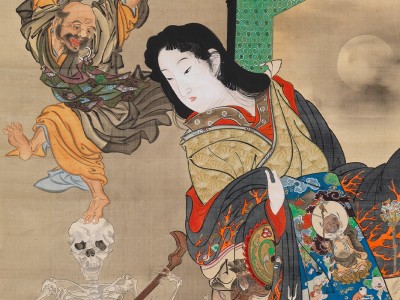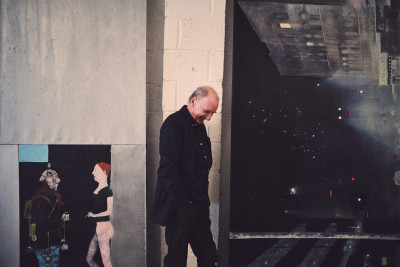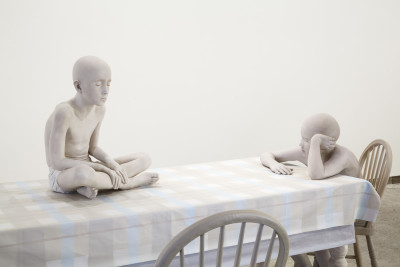Apichatpong Weerasethakul at Anthony Reynolds Gallery
Apichatpong Weerasethakul at Anthony Reynolds Gallery
By Maud Johnson
Published 25 April 2014
The Thai director presents a series of video installations in his first solo show at the gallery.
-
Thai director and artist Apichatpong Weerasethakul has garnered something of a cult following since the success of his Palme d’Or winning film Uncle Boonmee Who Can Recall His Past Lives in 2010. Double Visions is his first solo exhibition at Anthony Reynolds Gallery.
On entering the darkened room containing video installation Dilbar (2013, in collaboration with Chai Siri), you are struck first by the sound – the primal, repeated thump of what is eventually revealed to be a water-bore, emanating from a delicate screen hung suspended in the middle of the room. People passing behind the screen show up as shadows on its surface, echoing the shimmering figure of Dilbar, the protagonist, a Bangladeshi worker living in the United Arab Emirates.
-

Apichatpong Weerasethakul in collaboration with Chai Siri, Dilbar, 2013.
10 minutes. Edition of 5 + 2AP.
Single-channel video installation, suspended transparent screen, Dolby 5.1. Copyright the artist, courtesy Anthony Reynolds Gallery, London.
-
Dilbar opens with a close shot of Dilbar’s sleeping face, and although we see his waking life unfold, Weerasethakul said in a recent interview that the piece is ‘a portrait of a guy who’s asleep through the whole film’. The work is not so much a structured narrative, as a series of hypnogogic, fragmented shots. The quality of light in Dilbar and the sonorous, heavy thuds of the water-bore – part heartbeat, part chain gang – also give the ten-minute-long film a dream-like, almost hallucinatory feel. The exhibition as a whole reflects this fascination in Weerasethakul’s work with dreaming. Upstairs are four of Weerasethakul’s earlier works, including Teem (2007), a video shot on his phone of his sleeping boyfriend’s face as he wakes up three days in a row, and the artist’s earliest film, Windows (1999), a recording of a television screen whose interrupted signal causes distortions that are at once disturbing and mesmerising.
-

Apichatpong Weerasethakul, Teem, 2007.
Nov. 20 – 9 minutes 53 seconds. Nov. 21– 22 minutes 38 seconds. Nov. 22 – 27 minutes 31seconds. Edition of 10 + 1AP.
3 videos shot on mobile phone. Copyright the artist, courtesy Anthony Reynolds Gallery, London.
-

Apichatpong Weerasethakul, Blow Up, 2009.
Edition of 5 + 2 AP.
Archival digital print, mounted on Di-bond. 146.7 x 222 cm. Copyright the artist, courtesy Anthony Reynolds Gallery, London.
-
If there is a political charge to Dilbar, and one cannot help looking for one given the appalling quality of life many Bangledeshi migrant workers suffer from, then it is also approached through this theme of dreams. Speaking about works in the exhibition, Weerasethakul reflected that because of the civil unrest that has erupted in Thailand over the course of past decades, he has found he has begun to sleep more, and that in sleep he ‘shuns the malady of reality’ and ‘takes refuge in dreams’.
Apichatpong Weerasethakul: Double Visions is at Anthony Reynolds Gallery, London until 24 May 2014.
Maud Johnson is a contributor to RA Magazine.






